I need help in figuring out the algorithm/implementation OpenCV is using for image-downsampling with non-linear scaling factors.
I know the question was already ask a few times, but most answers seem to not match OpenCV's implementation (for instance, this answer is not correct when using OpenCV: https://math.stackexchange.com/questions/48903/2d-array-downsampling-and-upsampling-using-bilinear-interpolation).
Minimal problem formulation:
I want to downsample an image of resolution 4x4 to an image of resolution 3x3 using bilinear interpolation. I am interested in the interpolation coefficients.
Example in python:
img = np.asarray([[ 1, 2, 3, 4],
[ 5, 6, 7, 8],
[ 9, 10, 11, 12],
[13, 14, 15, 16]]).astype(np.float32)
img_resized = cv2.resize(img, (3, 3), 0, 0, cv2.INTER_LINEAR).astype(np.float32)
print(img)
# [[ 1. 2. 3. 4.]
# [ 5. 6. 7. 8.]
# [ 9. 10. 11. 12.]
# [13. 14. 15. 16.]]
print(img_resized)
# [[ 1.8333333 3.1666667 4.5 ]
# [ 7.166667 8.5 9.833333 ]
# [12.5 13.833333 15.166666 ]]
Interpolation coefficients:
After a lot of trial-and-error, I figured out the interpolation coefficients OpenCV is using for this specific case.
For the corner points of the 3x3 image:
1.8333333 = 25/36 * 1 + 5/36 * 2 + 5/36 * 5 + 1/36 * 6
4.5000000 = 25/36 * 4 + 5/36 * 3 + 5/36 * 8 + 1/36 * 7
12.5000000 = 25/36 * 13 + 5/36 * 9 + 5/36 * 14 + 1/36 * 10
15.1666666 = 25/36 * 16 + 5/36 * 15 + 5/36 * 12 + 1/36 * 11
For the middle points of the 3x3 image:
8.5 = 1/4 * 6 + 1/4 * 7 + 1/4 * 10 + 1/4 * 11
For the remaining 4 points of the 3x3 image:
3.1666667 = 5/12 * 2 + 5/12 * 3 + 1/12 * 6 + 1/12 * 7
7.1666667 = 5/12 * 5 + 5/12 * 9 + 1/12 * 6 + 1/12 * 10
9.8333333 = 5/12 * 8 + 5/12 * 12 + 1/12 * 7 + 1/12 * 11
13.833333 = 5/12 * 14 + 5/12 * 15 + 1/12 * 10 + 1/12 * 11
Question:
Can someone please help me make sense of these interpolation coefficients? How are they calculated? I tried to read the source of the cv::resize() function, but it did not help me a lot :S

